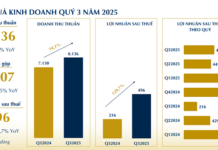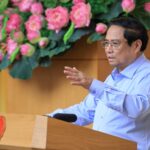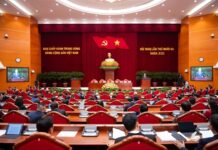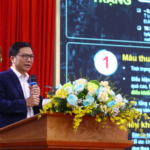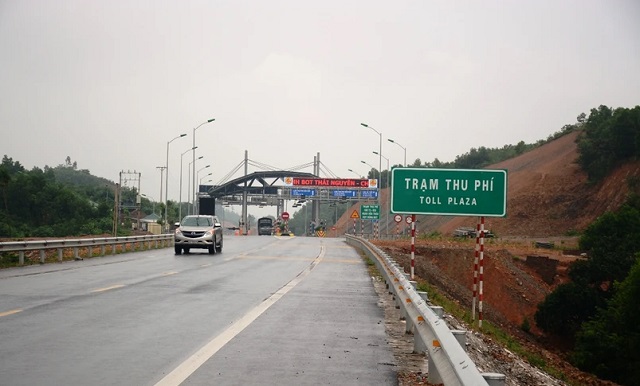
As of September 30, the disbursement rate of public investment capital from the state budget reached only 42.96% of the plan, equivalent to 47.29% of the plan assigned by the Prime Minister. (Photo: Vietnam+)
|
With just under three months left until the end of 2024, the pressure is on for ministries, sectors, and localities to complete the disbursement of public investment capital. Achieving the minimum target of 95% of the assigned plan, as per Resolution No. 01/NQ-CP dated January 5, 2024, is a significant challenge, requiring exceptional efforts and breakthrough solutions.
Identifying the Causes of Delayed Disbursement
According to the Ministry of Finance’s report, as of September 30, the disbursement rate of public investment capital from the state budget reached only 42.96% of the plan, equivalent to 47.29% of the plan assigned by the Prime Minister. These figures are notably lower than the same period in 2023, which saw corresponding achievements of 47.75% and 51.38%, respectively.
While the National Target Programs achieved 55.31% and the Program for Socio-economic Recovery and Development reached 80.16%, the reality ahead remains challenging. To meet the goal set by Resolution 01/NQ-CP, the country needs to disburse a substantial amount of capital in a short time, with only a few months left in the year.
The report also highlights a notable disparity in disbursement rates across ministries, sectors, and localities. While some units have achieved or even exceeded their plans, such as Vietnam Television (100%), the Social Policy Bank (100%), and provinces like Long An (71.5%), Hoa Binh (68.4%), Tien Giang (67.9%), and Thanh Hoa (66.64%), many others have extremely low disbursement rates, even 0% for the Vietnam Cooperative Alliance. Major cities like Ho Chi Minh City (21.29%) and Hanoi (38.88%) also recorded relatively low disbursement rates, significantly impacting the country’s overall performance.
Several factors contribute to the delayed disbursement of public investment capital, including both objective and subjective elements.
The most significant obstacle is the challenge of land clearance, directly affecting the construction progress of projects. Delays in compensation and resettlement or a lack of consensus among affected residents have led to the stagnation of many projects.
Ms. Nguyen Thi Minh Thao, Head of the Business Environment and Competitiveness Research Department at the Central Institute for Economic Management, pointed out that project preparation, especially land clearance, takes too long. The lack of determination from some localities in carrying out land clearance work has also contributed to the delay.
Additionally, unclear and inconsistent policies, along with legal entanglements, have hindered project implementation. Ms. Thao noted that mechanisms and policies have not been updated promptly, leading to prolonged procedures. Specifically, the updating, issuance, and implementation of guiding documents for the new Land Law have been slow, causing difficulties for localities.
Furthermore, experts pointed out that some localities have weak and inexperienced project management capabilities and lack highly skilled human resources. This has resulted in the inefficient implementation of many projects. The lack of strict supervision and the irresponsibility of some officials have also contributed to the delay.
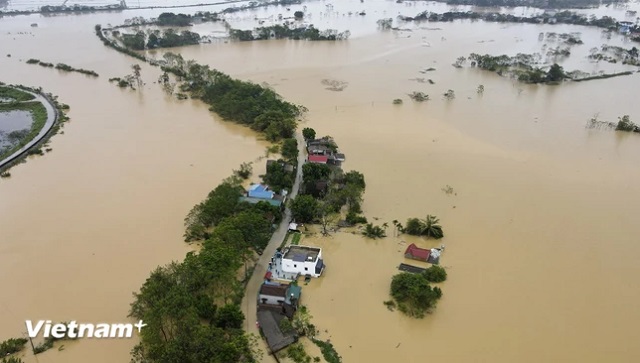 Super Typhoon Yagi affected 20 northern and central provinces. The localities are still in the process of recovering from the storm. (Photo: Vietnam+)
|
Extreme weather conditions and natural disasters have also significantly impacted the construction progress of many projects, particularly in the fields of construction and transportation. Notably, severe natural disasters, such as typhoons and landslides, in the northern provinces, have affected construction schedules, with many projects having to be temporarily halted for post-disaster recovery (Super Typhoon Yagi alone affected 20 northern and central provinces, and the localities are still in the process of recovering from the storm). Additionally, road subsidence and drought conditions in the canals of the Mekong Delta region have created challenges in transporting materials to construction sites.
Another bottleneck mentioned by Mr. Nguyen Ba Hung, the ADB’s Chief Economist for Vietnam, is the shortage of resources, especially construction materials like sand, which has led to increased costs, affecting project progress and effectiveness. The slow issuance of permits for the exploitation and transportation of materials has further exacerbated this issue.
Moreover, some candid opinions pointed out that, in some cases, there is still a tendency for officials, public employees, and civil servants to avoid, push back work, fear of making mistakes, fear of responsibility, and being overly cautious, leading to bottlenecks in organizing, implementing, and disbursing public investment capital.
Therefore, experts believe that to achieve the 95% target, a comprehensive approach and strong involvement from the entire system are necessary.
Strategies for Reaching the Finish Line
On October 7, at the regular Government meeting for September 2024, held online with 63 localities, Minister of Planning and Investment Nguyen Chi Dung presented several proposals for the Government’s consideration. Specifically, the Government should direct key localities, especially Hanoi and Ho Chi Minh City, to focus on boosting growth, promoting production and business activities, disbursing public investment capital, and removing obstacles for investment projects. Additionally, the Government should instruct 31 ministries, agencies, and 23 localities with disbursement rates below the national average to concentrate on accelerating the disbursement of allocated public investment capital.
The Ministry of Planning and Investment also advised the Government to authorize the Ministry of Finance to implement the import and approval of the 2024 budget estimate on TABMIS for the tasks and projects of the Ministry of Transport, the Ministry of Agriculture and Rural Development, and the Ministry of Labor, Invalids, and Social Affairs, which are assigned to non-affiliated units as investors. Accordingly, the above-mentioned ministries are fully responsible before the Government, inspection, auditing, and settlement agencies for choosing investors to implement projects and disburse public investment capital in 2024…
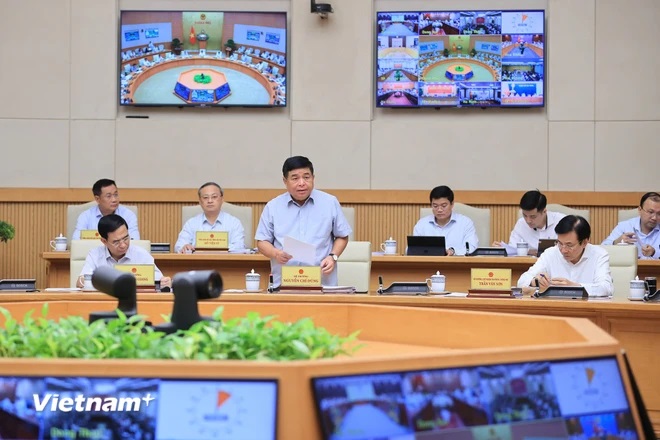
Minister of Planning and Investment Nguyen Chi Dung. (Photo: Vietnam+)
|
Additionally, Mr. Dung proposed that the Government direct the Ministry of Labor, Invalids, and Social Affairs and the Ministry of Agriculture and Rural Development to promptly complete the allocation plan for the 2025 public investment capital of the National Target Programs, in accordance with regulations, and submit it to the Ministry of Planning and Investment for reporting to the Government and presenting to the National Assembly at the 8th session.
Regarding the handling of difficulties related to the Phu Vinh and Hoanh Son industrial parks in the Vung Ang Economic Zone, Ha Tinh province (based on Resolution 128/NQ-CP dated September 8, 2024, of the Government), Minister Nguyen Chi Dung shared that the Ministry of Planning and Investment has coordinated with relevant agencies to clarify the legal basis, consequences, and related issues for the two industrial parks. Based on this, the Ministry of Planning and Investment proposed to the Government to unify and assign the People’s Committee of Ha Tinh province to decide on allowing these industrial park projects to be implemented.
Furthermore, the Ministry of Planning and Investment pointed out the specificity of many years, where the disbursement rate in the first months of the year is usually low, but there is a rapid increase in the last months as investors tend to rush to complete projects and procedures to reduce the number of times they have to go through payment processes.
While achieving the 95% target for disbursing public investment capital in the last months of the year is a significant challenge, it is not impossible. However, it requires close coordination and strong involvement from the entire political system. Moreover, transparency and accountability from all stakeholders are crucial to attaining the set goal./.
Hanh Nguyen
A Resilient Economy: Aiming for Over 7% GDP Growth in 2024
In concluding the online Government meeting with the 63 localities, Prime Minister Pham Minh Chinh emphasized 12 key task groups and solutions, along with 5 crucial and urgent task groups and solutions for the upcoming period. The primary goal is to strive for an economic growth rate of approximately over 7% for the entire year of 2024, with a growth target of 7.5-8% for the fourth quarter.
“Unleashing Businesses Unlocks the Economy’s True Potential: A Nation Grows When Its Enterprises Thrive.”
On the morning of September 21, Prime Minister Pham Minh Chinh chaired a conference at the Government Headquarters. The meeting was attended by members of the Government Standing Committee and prominent businesses, all working together to discuss solutions to foster the country’s socio-economic development.















